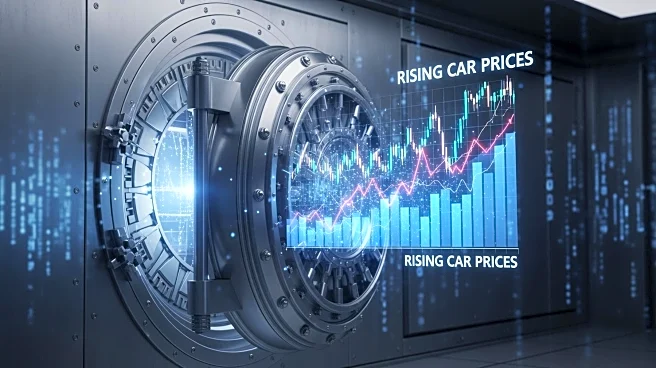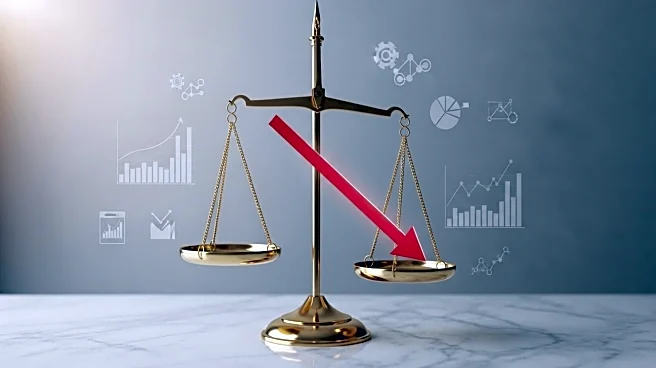What's Happening?
The average price of a new car in the United States has reached a record high of $50,000, according to a report featuring Stephen Kates, a financial analyst at Bankrate. This increase in car prices is causing
sticker shock among consumers and is indicative of broader economic trends. The rise in prices is attributed to several factors, including supply chain disruptions, increased demand, and inflationary pressures. These elements have combined to push car prices to unprecedented levels, affecting consumer purchasing power and potentially altering spending habits.
Why It's Important?
The surge in car prices has significant implications for the U.S. economy. As vehicles become more expensive, consumers may delay purchases or opt for used cars, impacting new car sales and the automotive industry. This trend could also affect related sectors, such as auto financing and insurance. Higher car prices contribute to inflation, which can influence monetary policy decisions by the Federal Reserve. Additionally, the increased financial burden on consumers may lead to reduced spending in other areas, potentially slowing economic growth.
What's Next?
If car prices continue to rise, it may prompt further analysis and action from policymakers and industry leaders. The automotive industry might explore strategies to mitigate costs, such as enhancing production efficiency or negotiating better terms with suppliers. Consumers may increasingly turn to alternative transportation options, such as public transit or car-sharing services, if prices remain high. The Federal Reserve may also consider adjusting interest rates to manage inflationary pressures, impacting broader economic conditions.
Beyond the Headlines
The rising car prices highlight deeper issues within the supply chain and manufacturing sectors. It underscores the need for resilience and adaptability in production processes to withstand disruptions. Additionally, the trend may accelerate the shift towards electric vehicles, as consumers seek more cost-effective and sustainable options. This could have long-term environmental benefits and drive innovation in the automotive industry.













